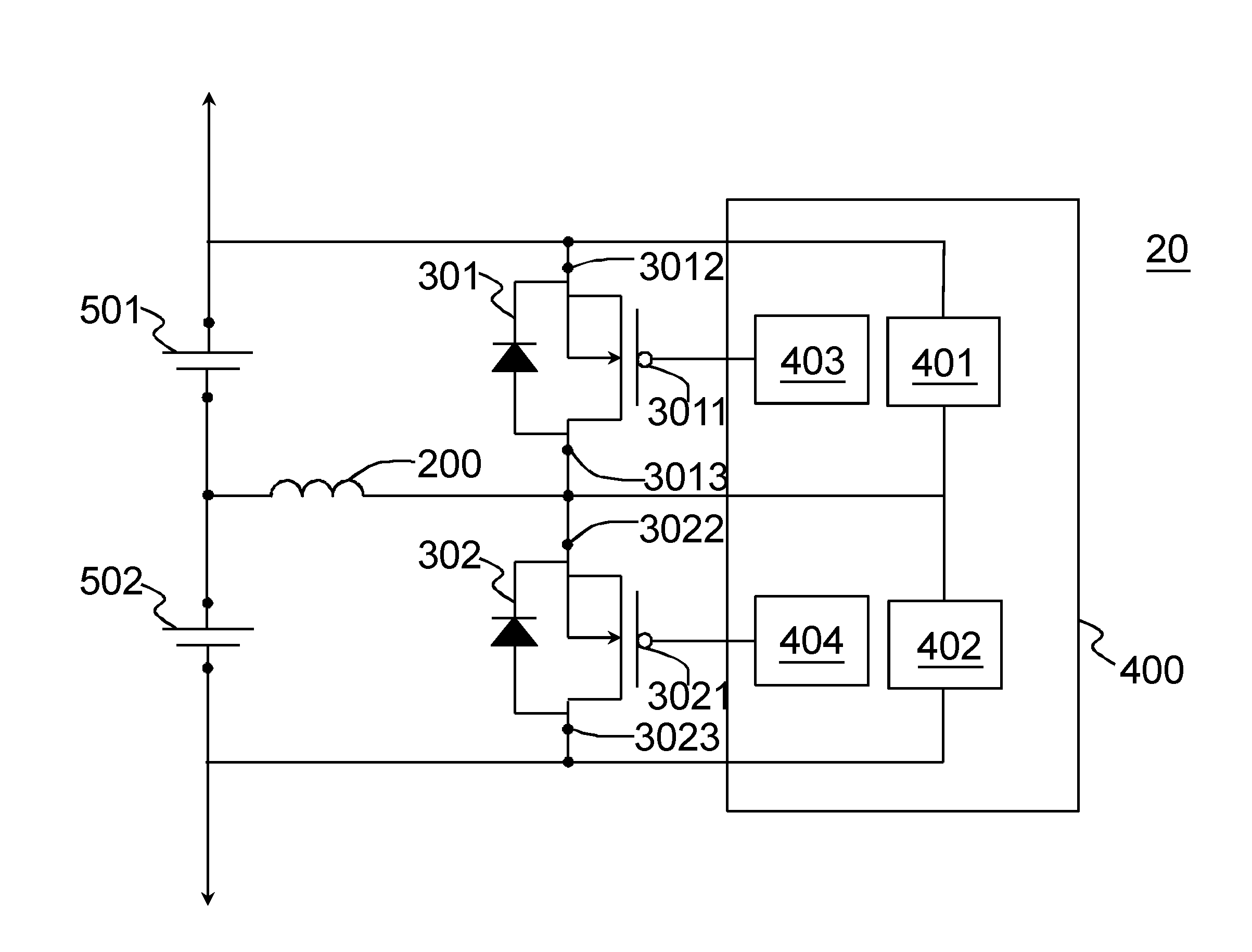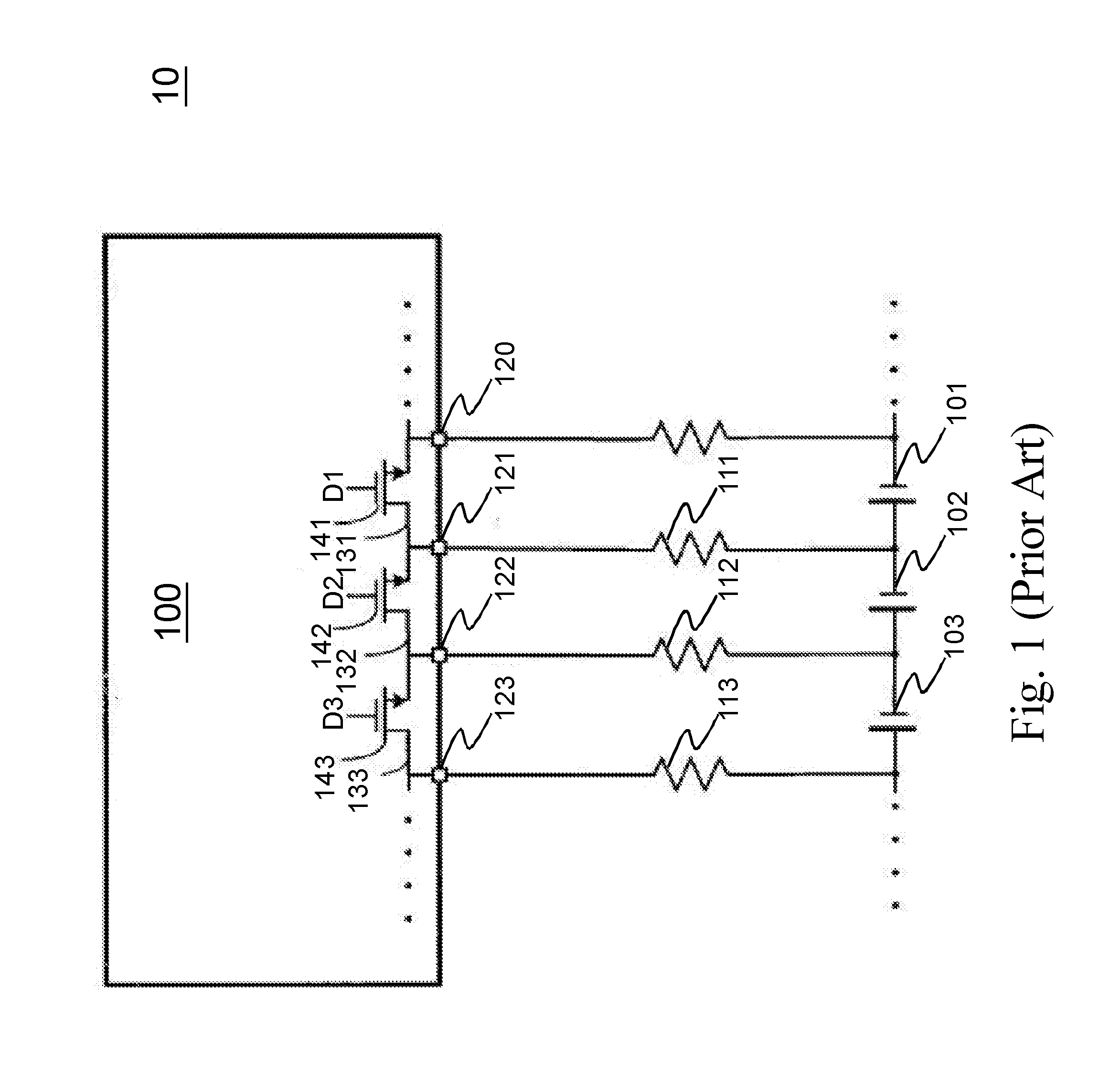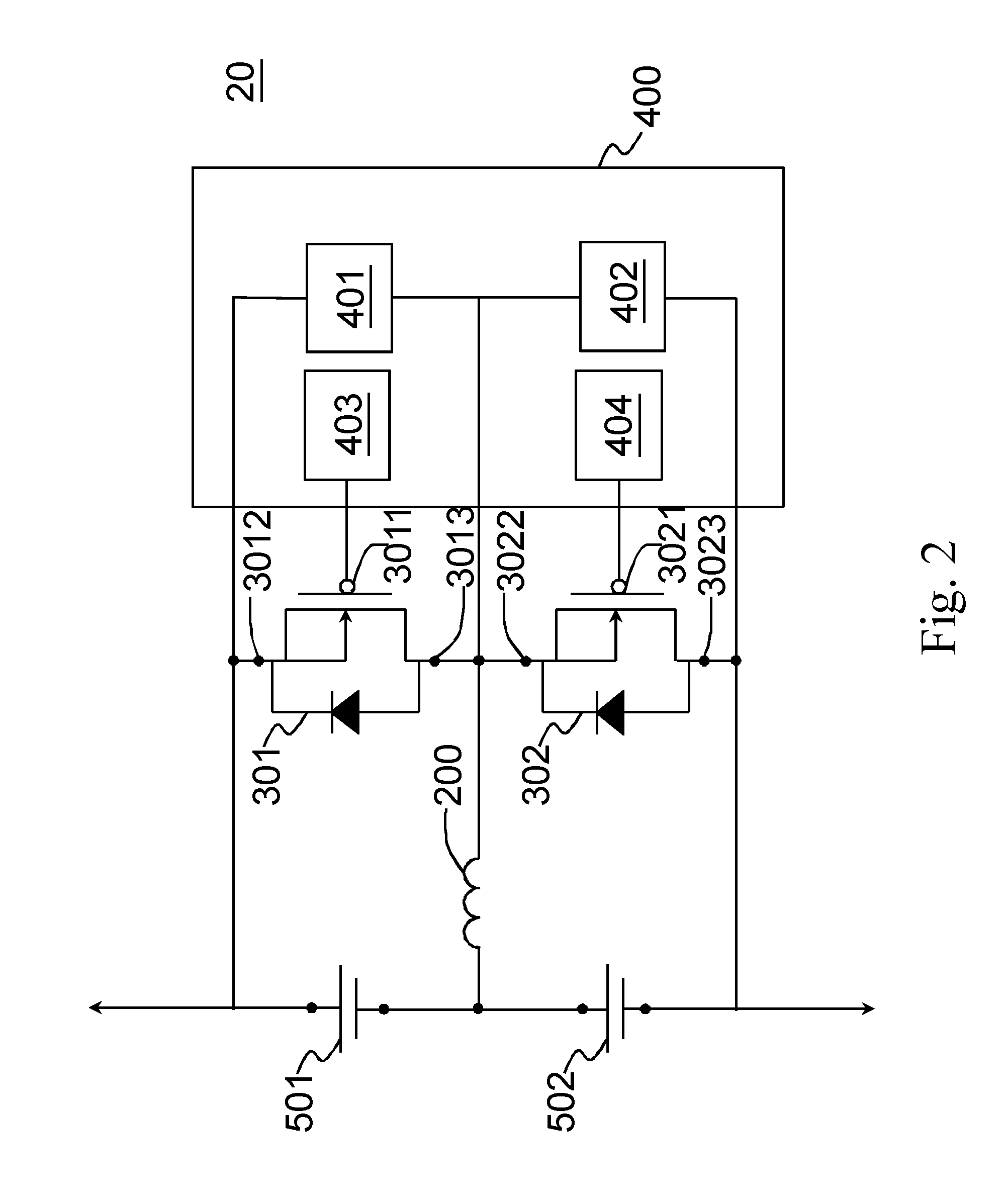Power transfer circuit for achieving power transfer between stacked rechargeable battery cells
a rechargeable battery and power transfer circuit technology, applied in the direction of charge equalisation circuit, transportation and packaging, charging circuit, etc., can solve the problems of generating heat in the balance circuit of rechargeable battery cells, extra consuming power, etc., and achieve the effect of less power, no unnecessary power consumption, and more power
- Summary
- Abstract
- Description
- Claims
- Application Information
AI Technical Summary
Benefits of technology
Problems solved by technology
Method used
Image
Examples
Embodiment Construction
[0025]The present invention will now be described more specifically with reference to the following embodiment.
[0026]Please refer to FIG. 2 to FIG. 7. FIG. 2 is a block diagram of a power transfer circuit according to the present invention. FIG. 3 illustrates an inductor in the power transfer circuit stores power. FIG. 4 illustrates the inductor in the power transfer circuit releases stored power. FIG. 5 illustrates the power transfer circuit comes back to original state. FIG. 6 is a flow chart of a control method for power transfer according to the present invention. FIG. 7 illustrates several power transfer circuits operate in series.
[0027]A power transfer circuit 20 for achieving power transfer between stacked rechargeable battery cells is composed of an inductor 200, a first switch 301, a second switch 302 and a controller 400. The inductor 200 is connected with a first rechargeable battery cell 501 and a second rechargeable battery cell 502 in parallel, respectively. Two loops ...
PUM
 Login to View More
Login to View More Abstract
Description
Claims
Application Information
 Login to View More
Login to View More - R&D
- Intellectual Property
- Life Sciences
- Materials
- Tech Scout
- Unparalleled Data Quality
- Higher Quality Content
- 60% Fewer Hallucinations
Browse by: Latest US Patents, China's latest patents, Technical Efficacy Thesaurus, Application Domain, Technology Topic, Popular Technical Reports.
© 2025 PatSnap. All rights reserved.Legal|Privacy policy|Modern Slavery Act Transparency Statement|Sitemap|About US| Contact US: help@patsnap.com



